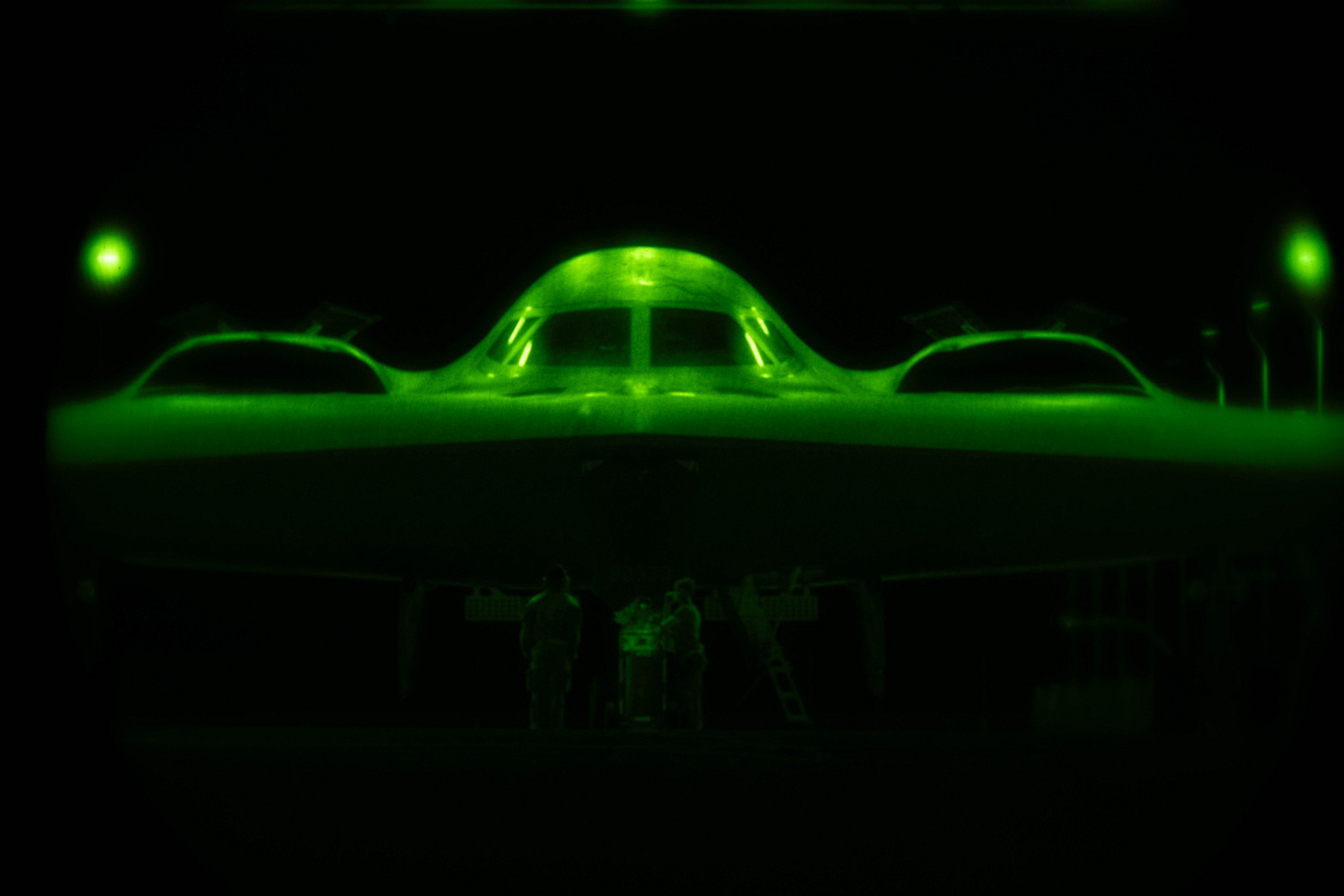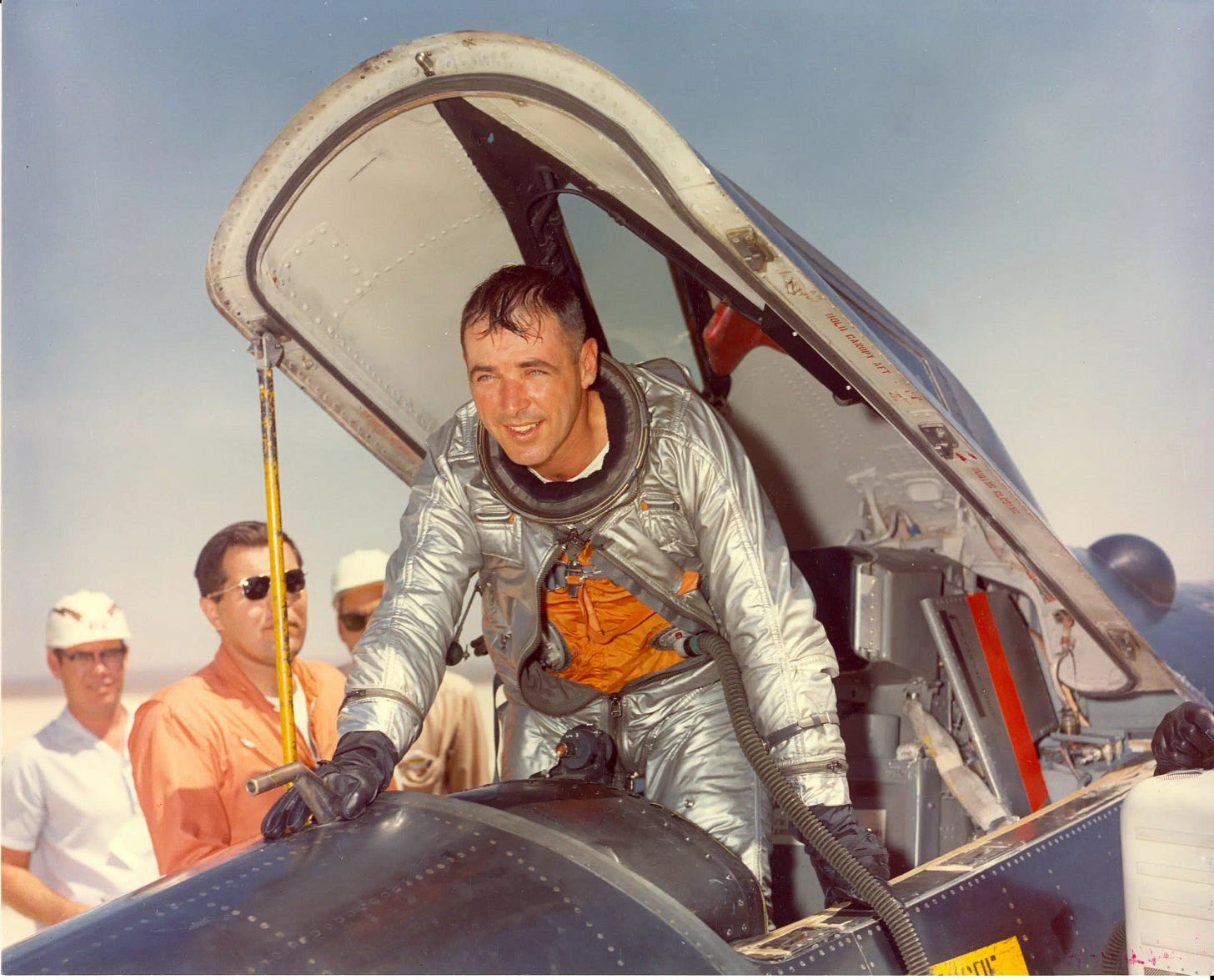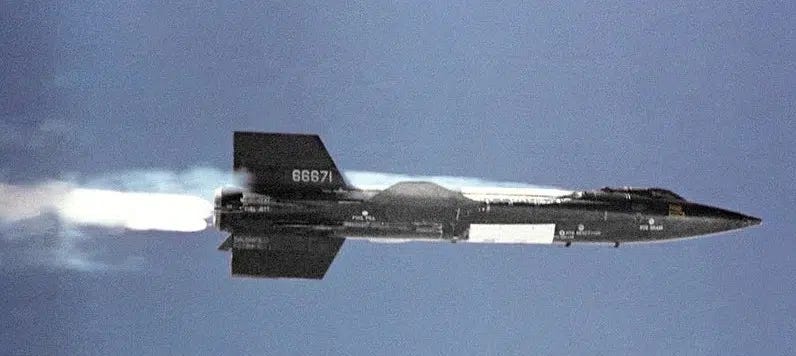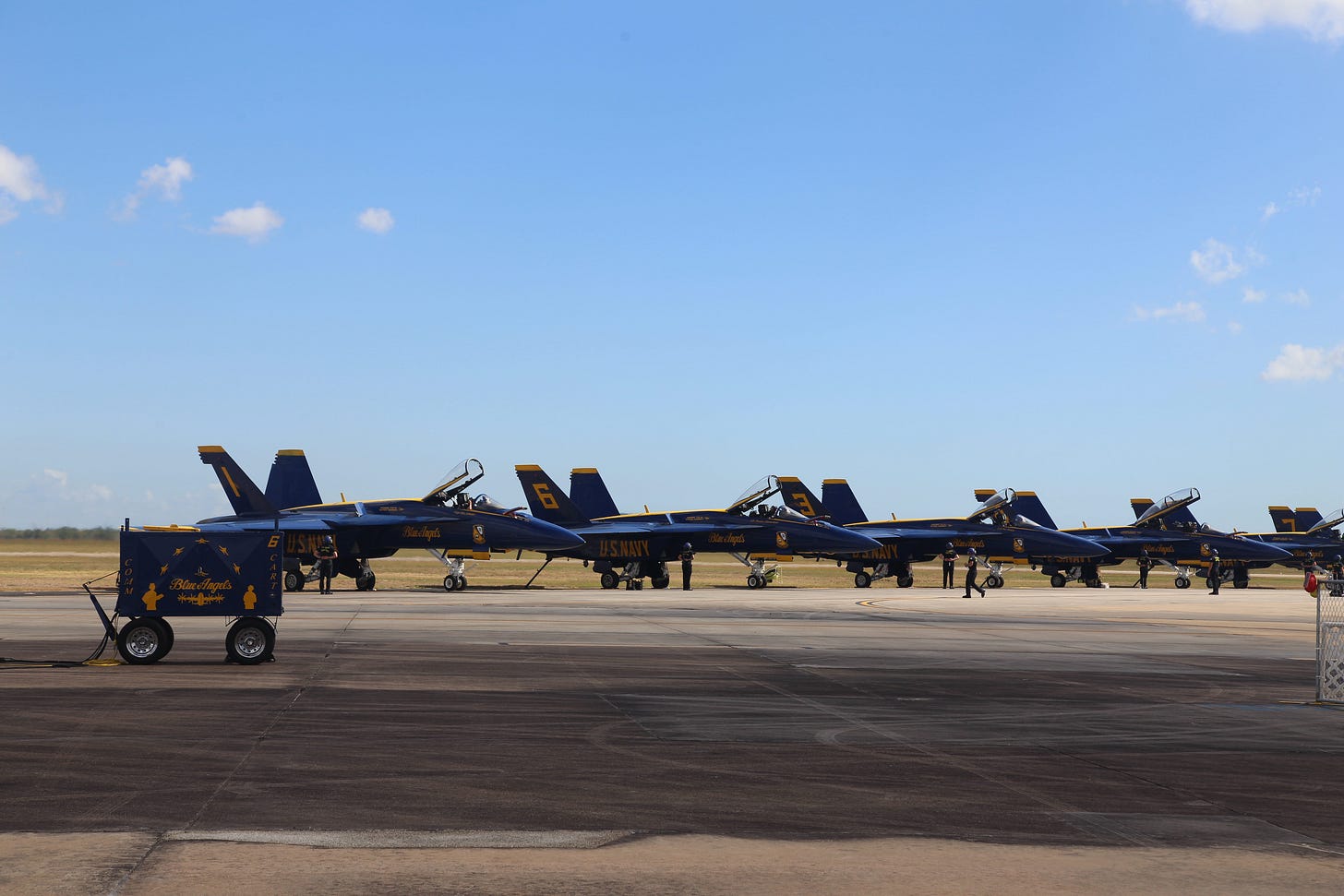Operation Midnight Hammer—Inside the B-2 Strike That Shook the World
A precision strike like no other in history - and what that means moving forward
"We retained the element of surprise."
— General Dan Caine, Chairman of the Joint Chiefs of Staff
Mission Briefing
As the world slept, America’s most secretive bomber made history.
On the night of June 21st, the B-2 Spirit—a flying wing cloaked in stealth and mystery—was launched on a strike mission unlike any before it. Its target? Iran’s most fortified nuclear facilities. Its weapon? A 30,000-pound bunker buster never before used in combat. The name of the operation was as dramatic as the event itself: Midnight Hammer.
This wasn’t a routine show of force. This was a calculated hammer blow—one that stunned allies, rattled rivals, and may have just redrawn the red lines in the Middle East.
Let’s break it down.
The Official Confirmation
At precisely 0900 Eastern Time the following morning, the Pentagon dropped its own bombshell. In a rare Sunday press conference, Secretary of Defense Pete Hegseth stood beside Air Force General Dan Caine and confirmed the strike.
“The order we received from our Commander in Chief was focused, it was powerful, and it was clear,” said Hegseth. “We devastated the Iranian nuclear program.”
—CBS News, June 22
The headlines soon followed:
“Largest B-2 Strike in History” — “MOP Deployed in Combat for First Time” — “Iran’s Defenses Never Saw It Coming”
A Strike Cloaked in Deception
Operation Midnight Hammer was planned with the kind of precision that only decades of stealth doctrine could deliver.
From Whiteman Air Force Base in Missouri, two B-2 groups departed—one heading west over the Pacific in full view of radar and satellite tracking. The other, the real strike package, slipped east across the Atlantic, through the Mediterranean, and into Iranian airspace.
The deception worked. The public and press followed the decoy. The strike group flew 18 hours, refueling midair, operating in near-total silence.
“Iran’s fighters did not fly. It appears their SAM systems did not see us.”
—General Dan Caine, PBS News
The Weapon They’d Never Used… Until Now
At 2:10 AM local time in Iran, the first GBU-57A/B Massive Ordnance Penetrator (MOP) was released over the Fordow nuclear site—one of Iran’s most hardened underground facilities.
Fourteen bombs followed.
Each MOP—over 30,000 pounds—was designed to punch through reinforced concrete and granite before detonating.
This was their first combat deployment.
Simultaneously, a U.S. Navy submarine launched Tomahawk cruise missiles at facilities near Isfahan, overwhelming Iran’s defensive systems and splitting their attention.
Result: A coordinated, multi-axis assault. No warning. No interception. And reportedly—no casualties.
Global Shockwaves
The international reaction was swift.
U.K., Israel, France — voiced support, calling it a decisive blow against nuclear proliferation.
Russia, China, Turkey — condemned the strike, accusing the U.S. of escalating regional instability.
The UN Security Council — called for an emergency session.
“A decisive gamble that may have altered the balance of power in the region,”
—TIME Magazine
But while the world debated, missiles began to fly again.
The Escalation Ladder
Within hours, Iranian and Israeli forces exchanged missile strikes.
By dawn, regional conflict was no longer theoretical—it was active.
Israel launched air defense counterstrikes. Iran responded with rocket attacks via proxy militias. The U.S. placed regional bases on high alert. Oil prices spiked. The global stock market trembled.
After the Hammer Falls…
The B-2s returned safely. Mission accomplished. But the world is still grappling with what comes next.
Was Operation Midnight Hammer a decisive deterrent?
Or was it the first shot in a war no one truly wants?
One thing is clear:
Stealth still matters. Precision still matters.
And the B-2 Spirit just reminded the world why it remains one of the most feared aircraft ever built.
Tog’s Take
From Whiteman to the heart of Iran and back again, this mission redefined what “long-range strike” means in the 21st century. It wasn’t just a bombing raid. It was a geopolitical thunderclap. And if you’re reading Hangar Flying, you probably already sensed it: we are living through history being made. One other note: Those of us that remember the B-2’s unveiling in 1988 probably also remember all of the negative press associated with the aircraft - it was called everything from a “waste of money” to a failure - its amazing to see that over 30 years later the Spirit lives on - and is still highly effective.
I’ll keep tracking this one—because the next chapter is already being written in radar shadows and satellite orbits.
Until next sortie—stay sharp.
— Tog
SIDEBAR: Weapons of Midnight Hammer
▶️ GBU-57A/B – Massive Ordnance Penetrator (MOP)
Weight: 30,000 lbs
Length: 20.5 feet
Penetration Depth: Over 200 feet of reinforced concrete
Purpose: Designed specifically to destroy deeply buried bunkers and nuclear facilities.
Combat Debut: Operation Midnight Hammer marks the first confirmed use of the MOP in active combat.
Platform: Deployed exclusively by the B-2 Spirit due to its internal bay size and payload capacity.
“The MOP doesn’t just hit the target—it obliterates the idea that underground equals safe.”
▶️ Tomahawk Block IV – Land Attack Cruise Missile
Range: ~1,000 miles
Guidance: GPS, TERCOM, DSMAC
Payload: 1,000-lb unitary warhead
Launched From: U.S. Navy submarine (undisclosed class, likely Virginia or Ohio SSGN)
Mission Role: Secondary strike vector, used to simultaneously degrade Iranian air defenses and distract from the incoming B-2s.
“While the bombers hit hard and deep, the Tomahawks hit wide and early.”
▶️ B-2A Spirit – Stealth Bomber, Heavy Strike Platform
Range: 6,900 nautical miles (unrefueled)
Crew: 2
Payload Capacity: 40,000 lbs
Notable Features: All-aspect stealth, terrain-following radar, fly-by-wire controls, and now—combat deployment of the MOP.
Home Base: Whiteman AFB, Missouri
“Still the quietest, deadliest bomber on Earth.”
This Week in Aviation History
23 June 1961 – Mach 5: When Bob White Broke the Sound Barrier’s Barrier
Before stealth bombers and hypersonic gliders… there was the X-15.
And on this week in 1961, Major Robert M. White did what no pilot had done before—he flew faster than Mach 5. It was the 38th flight of the legendary X-15 program, and it pushed the boundaries of what was even considered survivable in a manned aircraft.
Dropped from a B-52A Stratofortress over the Nevada desert, X-15A tail number 56-6671 ignited its XLR99 rocket engine and tore through the stratosphere. White reached Mach 5.27—that’s over 3,600 mph—and soared to 107,700 feet.
The entire mission lasted just over 10 minutes. But in that short flight, Bob White didn’t just break a record—he defined what the future of flight would look like.
And he wasn’t done.
White would go on to become the first man to fly Mach 4, 5, and 6, and later flew an X-15 to the edge of space—314,750 feet—earning his U.S. Air Force astronaut wings. As if that wasn’t enough, after the X-15 program he flew 70 combat missions in Vietnam in the F-105D Thunderchief, leading the famous strike on the Paul Doumer Bridge in Hanoi, for which he was awarded the Air Force Cross.
White retired as a Major General in 1981. He passed away in 2010—but the aircraft that carried him into history lives on.
X-15A 56-6671 is preserved at the National Museum of the United States Air Force
Its mothership, B-52A 52-003, rests at the Pima Air and Space Museum in Tucson, AZ
Test pilots like White didn’t just chase the edge of the envelope—they expanded it.
In Case You Missed It
Looking back on the first flight of the B-2’s replacement:
Photo Outlet
Every issue of Hangar Flying with Tog gets you a free image that I’ve taken at airshows - and this week I wanted to change it up by including a brief video:
Feel free to use these photos (or in this case video) however you like, if you choose to tag me, I am @pilotphotog on all social platforms. Thanks!
Post Flight Debrief
Like what you’re reading? Stay in the loop by signing up below—it’s quick, easy, and always free.
This newsletter will always be free for everyone, but if you want to go further, support the mission, and unlock bonus content, consider becoming a paid subscriber.
Your support keeps this flight crew flying—and I couldn’t do it without you.
– Tog







This entire operation took planning, strategy, intelligence & common sense. You know taco DONNY & the RePubliKKKans had nothing to do with it.